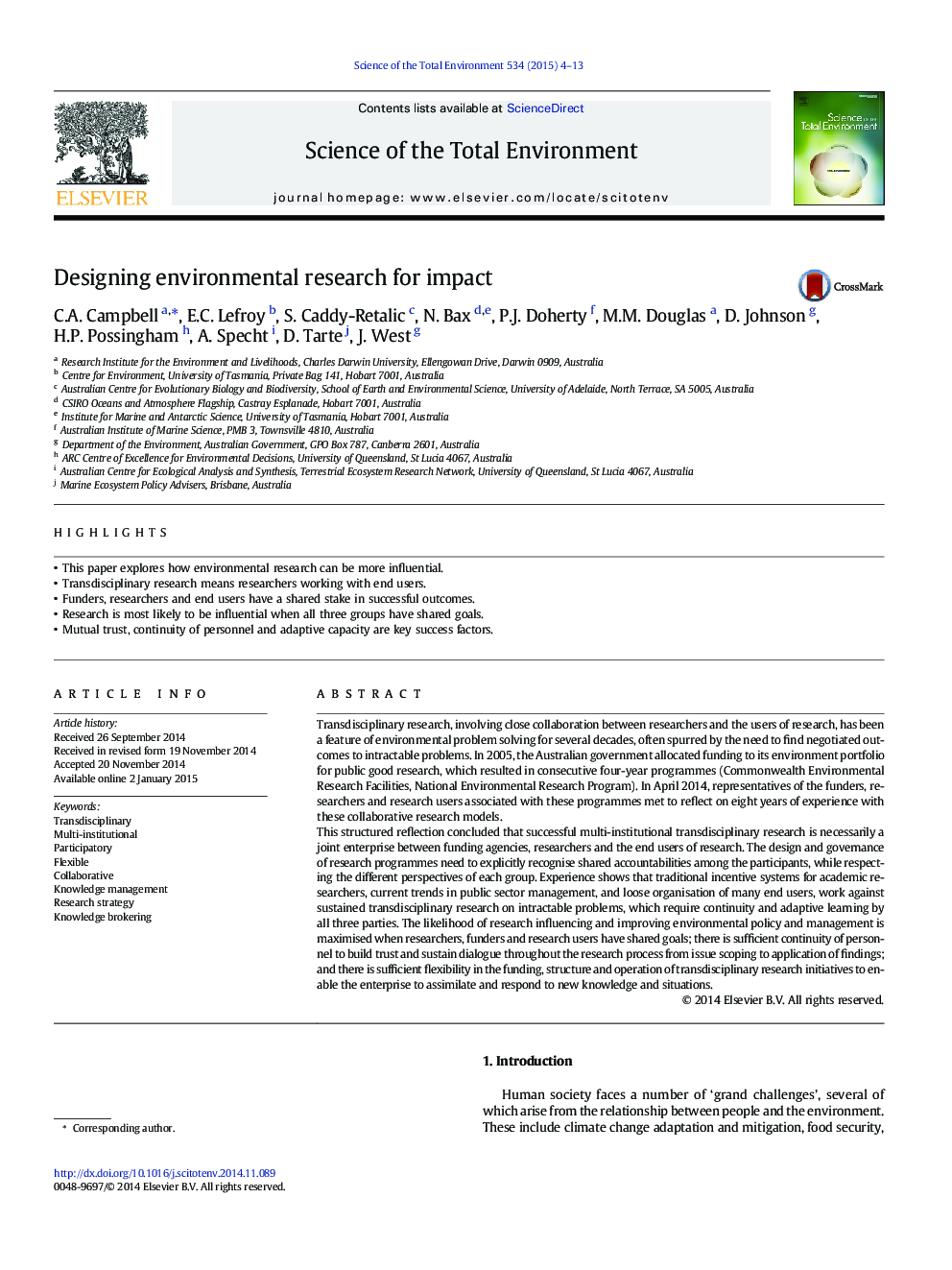| کد مقاله | کد نشریه | سال انتشار | مقاله انگلیسی | نسخه تمام متن |
|---|---|---|---|---|
| 4428330 | 1619750 | 2015 | 10 صفحه PDF | دانلود رایگان |
• This paper explores how environmental research can be more influential.
• Transdisciplinary research means researchers working with end users.
• Funders, researchers and end users have a shared stake in successful outcomes.
• Research is most likely to be influential when all three groups have shared goals.
• Mutual trust, continuity of personnel and adaptive capacity are key success factors.
Transdisciplinary research, involving close collaboration between researchers and the users of research, has been a feature of environmental problem solving for several decades, often spurred by the need to find negotiated outcomes to intractable problems. In 2005, the Australian government allocated funding to its environment portfolio for public good research, which resulted in consecutive four-year programmes (Commonwealth Environmental Research Facilities, National Environmental Research Program). In April 2014, representatives of the funders, researchers and research users associated with these programmes met to reflect on eight years of experience with these collaborative research models.This structured reflection concluded that successful multi-institutional transdisciplinary research is necessarily a joint enterprise between funding agencies, researchers and the end users of research. The design and governance of research programmes need to explicitly recognise shared accountabilities among the participants, while respecting the different perspectives of each group. Experience shows that traditional incentive systems for academic researchers, current trends in public sector management, and loose organisation of many end users, work against sustained transdisciplinary research on intractable problems, which require continuity and adaptive learning by all three parties. The likelihood of research influencing and improving environmental policy and management is maximised when researchers, funders and research users have shared goals; there is sufficient continuity of personnel to build trust and sustain dialogue throughout the research process from issue scoping to application of findings; and there is sufficient flexibility in the funding, structure and operation of transdisciplinary research initiatives to enable the enterprise to assimilate and respond to new knowledge and situations.
Journal: Science of The Total Environment - Volume 534, 15 November 2015, Pages 4–13
